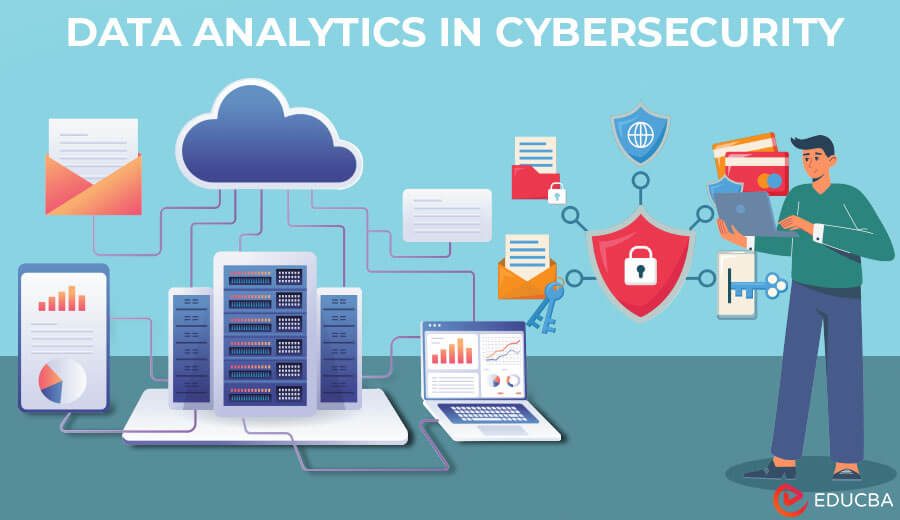Updated December 4, 2023
Big Data Analytics in Cybersecurity – Introduction
Risks of unsafe online practices can leave you and your business unprotected against cybercriminals. Today, the risks of not securing sensitive information are at an all-time high. Complex multi-level schemes and strategies that cybercriminals use are potent enough to breach the most holistic protection possible. So it is of utmost importance to gather all means available.
In such a dynamic landscape, using only traditional cybersecurity measures is not enough. This article will explain all the possibilities and ways in which big data analytics in cybersecurity can help you keep your digital kingdom safe.
The Power of Big Data
Before diving into the intricate relationship of big data analytics in cybersecurity, let’s explain the essence of big data. Big data refers to data that is so large, fast, or complex that it’s difficult or impossible to process using traditional methods. These data sets, often characterized by their volume, hold huge potential for insights when harnessed effectively.
Suppose you consider the scale of data generated daily, like user interactions, transaction records, system logs, etc. In that case, it’s not hard to imagine what kind of insights we can get from analyzing it. If your computer’s data is too massive to analyze, you can try some PC cleaners. Big data analytics go through these giant seas of information and get insights from it. Today, we will talk about the ways it can benefit your cybersecurity.
To understand the power that big data holds, we first need to understand its scale. In one single day, trillions of bytes of data are created, coming from everything from social media interactions to financial transactions. Big organizations already use big data to navigate and derive meaningful insights into information that they later use to develop smart solutions.
Benefits of Big Data Analytics in Cybersecurity
1. Improving Threat Detection
Integrating big data analytics in cybersecurity can help you detect and stop any possible breaches. Big data security analytics uses advanced analytical techniques on large-scale data sets to detect and identify potential cybersecurity threats. Traditional threat detection methods might struggle to keep up with the pace of modern cybercriminals. However, by harnessing the power of big data, organizations can go through vast datasets in order to detect patterns, trends, and anomalies that indicate a data breach.
2. Optimizing Incident Response
In the face of a cyber incident, the use of big data analytics in cybersecurity accelerates incident response by providing real-time insights and context. By acting quickly, rapidly analyzing, and correlating data from various sources, big data analysts can pinpoint the source and nature of an attack in time. Analysts use a wide range of data sources, like network traffic and log files, to gather as much information as possible about that specific attack. It enables you to prepare a more effective response.
3. Using Big Data to Defend Against Different Threats
The global average cost of data breaches in 2022 was $4.35 million. Cybercriminals will use any means necessary to get to those lucrative prizes, often incorporating complex multi-level attacks. The landscape in which big data analysts have to find ways to defend is always changing and dynamic. Attackers are always evolving their strategies, and cybersecurity professionals need to stay in front of them.
The use of Big data analytics in cybersecurity gives teams insights into previous and ongoing attacks so that they can plan and stop threats. By continuously analyzing data patterns, organizations can predict future attacks and fortify their vulnerabilities to stay ahead of cyber attacks.
4. Using Real-Time Insights to Combat Ongoing Threats
Big data analytics doesn’t focus on just historical data; skilled data analysts can also use it to empower organizations with real-time insights. Imagine a scenario in which a cybersecurity team can detect a cybersecurity threat and, using the same data, can stop it. By acting quickly and proactively, analysts can add a whole new layer of protection, ensuring that organizations are not only reacting to cybersecurity incidents but also actively working on stopping any possible risks in the present moment.
5. Using Machine Learning for Identifying Hidden Patterns
As an Artificial Intelligence brand, machine learning uses big data sets and algorithms to teach a computer system to learn in the same way a human would. With training and programming, machine learning systems develop data models that act as models for real cybersecurity threats. This way, machine learning systems can predict the exact template for behavior that would be recognized as a threat.
What are EPPs?
Endpoint protection platforms are an integrated system of protection from threats that come from the network. They leverage personal firewalls, ports, and device control to protect from cybercrime. Endpoint protection platforms are useful for end-point devices like desktop and laptop computers, mobile phones, and notebooks. EPPs do this by continuously monitoring activities and collecting data across the network to any device connected. Also, they allow special permissions to authorized personnel to access and monitor EPPs for a stable and more secure network experience.
Continuous Innovation in Cybersecurity
Adding big data analytics in cybersecurity marks a big shift in how we approach digital security. The possibilities of using big data sets are giving organizations more power to detect threats, respond in time to incidents, and proactively work on their defense tactics. The effects of joining big data analytics and cybersecurity aren’t just about technology—they are about creating a resilient system that can adapt and evolve in the face of always-evolving cyber threats.
Moreover, advancements in machine learning, artificial intelligence, and predictive analytics further strengthen our ability to combat cyber threats. The joint future of cybersecurity and machine learning is certain. Organizations that embrace this ongoing evolution will not only secure their digital assets but will also pioneer new frontiers in the ever-expanding landscape of cybersecurity.
Recommended Articles
We hope you found this article on Big Data Analytics in Cybersecurity helpful. You can refer to the following EDUCBA recommendations to read similar articles.




